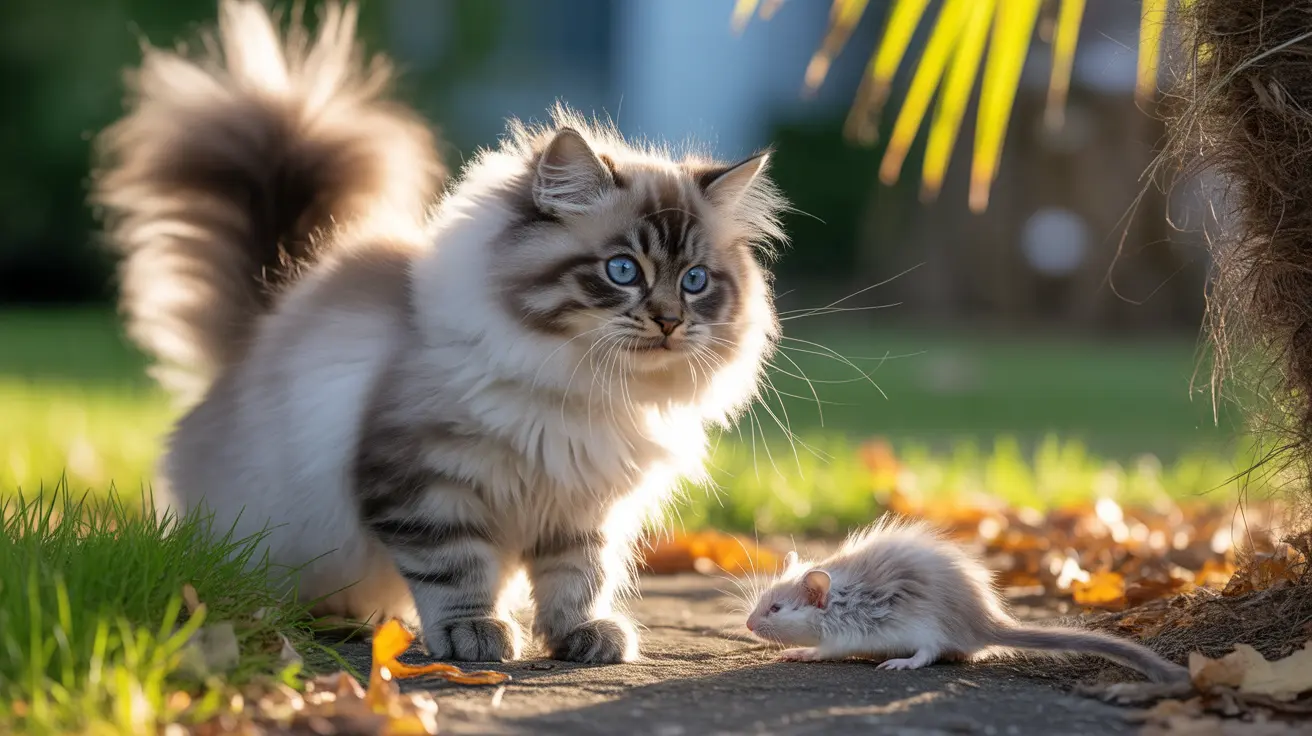Common Causes of Swollen Cat Paws
Injuries and Trauma
Physical injuries are among the most frequent causes of paw swelling in cats. These can include cuts, puncture wounds, sprains, and fractures. Outdoor cats are particularly susceptible to such injuries from encounters with sharp objects or accidents during their adventures.
Infections and Abscesses
Cat fights often result in bite wounds that can develop into painful abscesses. These infections typically cause significant swelling and may require immediate veterinary attention. Additionally, bacterial or fungal infections can develop from seemingly minor scratches or cuts.
Insect Stings and Bites
Encounters with bees, wasps, spiders, or other insects can cause acute paw swelling. Some cats may experience allergic reactions to these stings or bites, potentially leading to more severe symptoms requiring emergency care.
Serious Medical Conditions
Pododermatitis ("Pillow Foot")
This inflammatory condition affects the paw pads, causing them to appear swollen and spongy. It's often associated with immune system dysfunction and may be linked to more serious conditions like FeLV or FIV.
Systemic Diseases
Sometimes, swollen paws can indicate underlying systemic conditions such as heart disease, autoimmune disorders, or certain types of cancer. These cases typically affect multiple paws and may be accompanied by other symptoms.
Recognizing Warning Signs
Watch for these critical symptoms that may accompany a swollen cat paw:
- Limping or reluctance to put weight on the affected paw
- Excessive licking or chewing of the paw
- Visible wounds, discharge, or unusual odors
- Changes in behavior or appetite
- Multiple paws affected simultaneously
Treatment Approaches
Treatment varies depending on the underlying cause:
- Minor injuries may require cleaning and monitoring
- Infections typically need antibiotics and possible drainage
- Allergic reactions may require antihistamines or steroids
- Chronic conditions often need long-term management strategies
- Serious systemic conditions require comprehensive veterinary care
Prevention Tips
To help prevent paw swelling in cats:
- Regular paw inspections, especially for outdoor cats
- Maintain clean living areas free of hazards
- Keep nails properly trimmed
- Address any injuries promptly
- Schedule regular veterinary check-ups
Frequently Asked Questions
Why is my cat's paw swollen and what should I do about it?
A swollen cat paw can result from injuries, infections, insect stings, or underlying medical conditions. If you notice swelling, examine the paw carefully for visible wounds or foreign objects. For significant swelling, pain, or if the condition persists more than 24 hours, consult a veterinarian.
How can I tell if my cat's swollen paw is serious and needs a vet?
Seek immediate veterinary care if you notice severe swelling, bleeding, pus, limping, or if your cat shows signs of pain or distress. Additionally, if multiple paws are affected or if the swelling is accompanied by other symptoms like lethargy or reduced appetite, professional medical attention is necessary.
What are the most common causes of a swollen paw in cats?
The most common causes include physical injuries (cuts, sprains), infections from bite wounds, insect stings or bites, foreign objects stuck in the paw pad, and inflammatory conditions like pododermatitis.
How is "pillow foot" in cats diagnosed and treated?
Pillow foot (pododermatitis) is diagnosed through physical examination and sometimes tissue sampling. Treatment typically involves immunosuppressive medications, antibiotics if secondary infection is present, and supportive care. Some cases require long-term management.
What home care tips can help prevent or reduce paw swelling in cats?
Regular paw inspections, maintaining a clean environment, proper nail care, and prompt attention to injuries can help prevent paw swelling. However, never attempt to treat serious swelling or infections at home - always consult a veterinarian for proper diagnosis and treatment.
Conclusion
While a swollen cat paw can be concerning, understanding the potential causes and knowing when to seek veterinary care can help ensure the best outcome for your feline companion. Remember that early intervention often leads to faster recovery and better results, so don't hesitate to consult your veterinarian if you're uncertain about the severity of your cat's condition.






